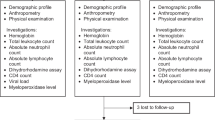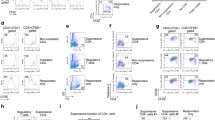Abstract
The ability to generate reactive oxygen species, the so-called oxidative burst, is essential for neutrophils to kill infectious micro-organisms. Flow cytometry was used to study oxidative burst prior to, during, and after cytostatic therapy. Seven patients were treated according to the DexaBEAM regimen with 12 cycles monitored. Four patients were treated according to the B-NHL regimen in which nine cycles were monitored. Ten healthy volunteers were chosen as a control group without any treatment. Neutrophils were collected from heparinized peripheral blood and were stimulated by phorbol-12-myristate-13-acetate (PMA), N-formyl-methionyl-leucyl-phenylalanine (FMLP), and Escherichia coli. The oxidative burst was estimated by the amount of nonfluorescent dihydrorhodamine 123 converted to green fluorescent rhodamine 123. Measurements were done daily. The FMLP-induced burst was enhanced in patients before therapy as compared with the control group, whereas PMA-induced burst was decreased slightly. E. coli-, FMLP-, and PMA-induced oxidative burst decreased in both groups during cytostatic therapy. E. coli-induced burst increased again within 2 days of G-CSF treatment in vivo. FMLP-induced burst increased in the B-NHL group but decreased in the DexaBEAM group. In patients who have recovered from leukopenia the oxidative burst is still partly suppressed. PMA-induced oxidative burst measured at the start of therapy correlates with infectious complications. Thus, PMA-induced burst may be used as a simple method for evaluating the individual risk of infections during therapy. The results demonstrate the modulating effect of cytostatic drugs on the oxidative burst and may explain why some patients suffer from severe bacterial infections although the total number of granulocytes is normal.
Similar content being viewed by others
Author information
Authors and Affiliations
Additional information
Received: February 8, 1999 / Accepted: August 27, 1999
Rights and permissions
About this article
Cite this article
Volk, J., Kleine, HD., Buthmann, U. et al. Oxidative burst measurement in patients treated with cytostatics: influence of G-CSF and role as a prognostic factor. Ann Hematol 79, 187–197 (2000). https://doi.org/10.1007/s002770050578
Issue Date:
DOI: https://doi.org/10.1007/s002770050578




